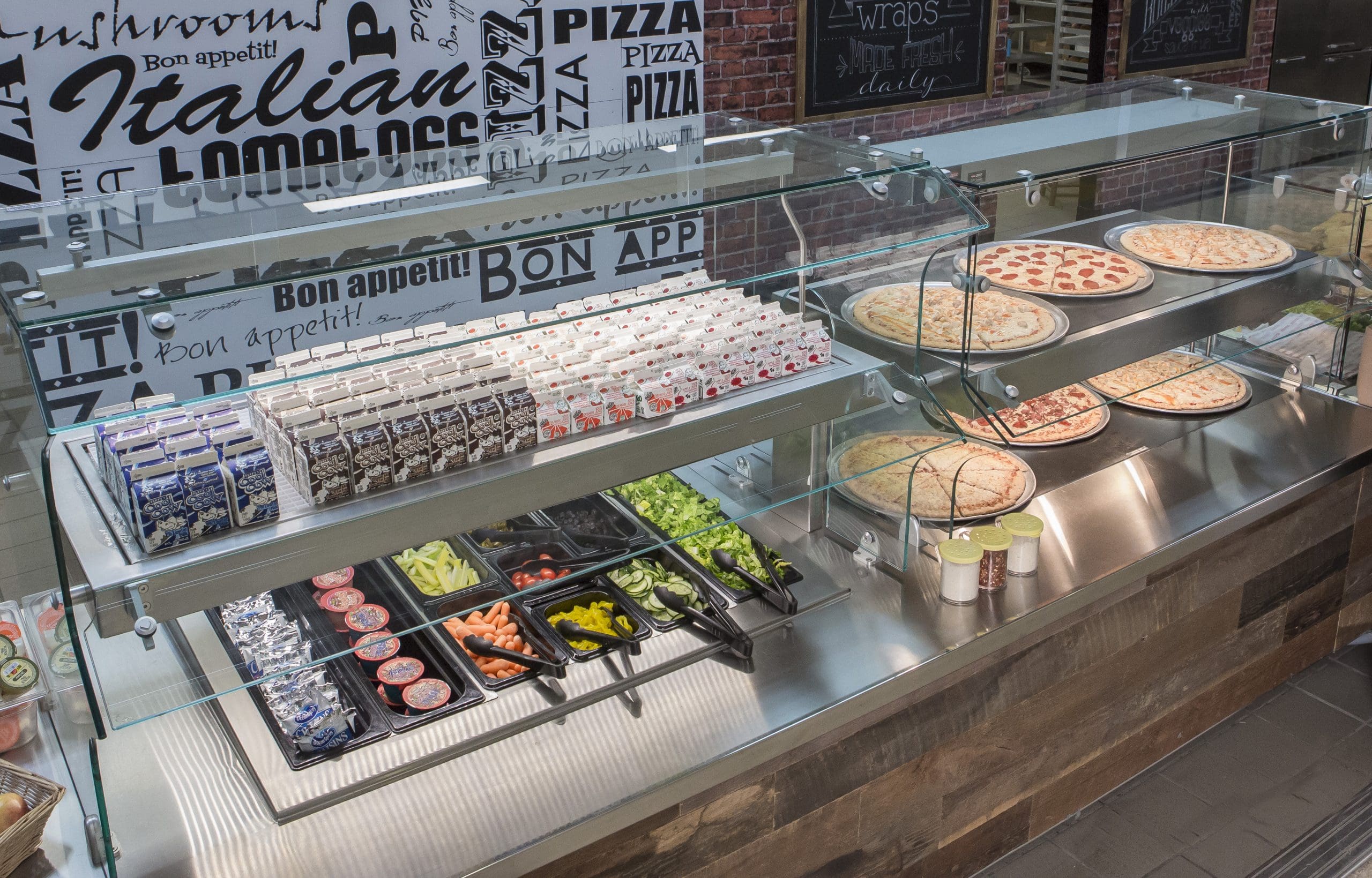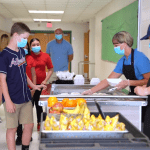When it comes to redesigning a K-12 school cafeteria, there are quite a wide variety…
Cafeteria Serving Line Layouts Designed for Speed

Layout improvements are how to make school lunch lines faster
The K-12 lunch period is a concept that is just about as old as schools themselves. Yet, many schools have not found a way to optimize the 30-minute stampede that is the lunch line. As most schools National School Lunch Programs’ are self-sustaining, one would think there would be more of a priority placed on achieving greater student participation by administrations. However, all too often, serving lines fall behind in terms of speed and capacity, which can have a dramatic impact on a school dining program’s ability to fund itself.
For those experiencing slow lines, low student participation and consequently low sales, here are the top five serving line design problems that might be slowing down service and how you can make school lunch lines faster.
Problem: Poor lunch line layout
Answer: This may be the biggest culprit of a slow serving line and is also the broadest problem. Layout issues can be caused by the design of entry and exit points for the serving line, the flow (or lack thereof) between serving stations or even the misuse of space.
The fix for these layout miscues is always case by case. Sometimes a wall needs to be removed or doors added to increase flow within the serving area. Other times adding remote feeding stations situated outside of the main serving area can work to speed up the serving process. Strategically placed self-service stations can also help break up long lines and increase speed.
The bottom line is, layout issues generally require a holistic approach by a design team to be solved. Between the square footage of the serving area, the size of the student body and the menu options the school would like to make available, there is an equation for a successful layout. It just takes a trained eye to find it.
Problem: Lack of serving equipment flexibility
Answer: When serving station equipment dictates the menu that a school can offer, the speed of the serving line, many times, ends up being affected. If hot and cold drop-in wells remain static in their location, the flow of the serving line is eventually compromised. This can lead to limited offerings as well as students bouncing around from location to location instead of a constantly moving line. Investing in serving equipment that allows a cafeteria to be more flexible with its food placement will not only help streamline the serving process, but it will also allow schools to enhance their menu options.
We have found that a combination of made-to-order or assembled-to-order, along with attractively displayed grab-and-go items, will satisfy customers with differing needs.
For example, our QuickSwitch drop-ins are independently controlled and can change from cold to hot to frozen at the operator’s discretion. This technology allows kitchens to serve all hot, all cold or any combination off the two at the same point of access without requiring diners to move about for their hot or cold preferences. LTI’s state-of-the-art QuickSwitch Glass Display Shelves help merchandise pre-made entrees and sides allowing certain customers to breeze through the lines.
Problem: No use of vertical space
Answer: The kitchen layout is typically designed in a linear fashion. Food is placed along a counter that is uniform in height across the serving station. This spreads dining options out, unnecessarily, across the limited square footage of many school cafeterias. As an operator strives to add more offerings to the menu, they quickly run out of space. The ceilings above a serving line, however, can be nine or 10 feet tall, allowing for plenty of room for vertical merchandising that places more items in one location for quick and easy access.
Problem: Lots of options
Answer: Often students might show up to the cafeteria not knowing what will be served that day. Offering too many options for the K-12 student can mean indecision. Providing menu boards prior to entering the cafeteria is one solution. Using merchandising signage throughout the serving area, will also help support student decision making. If there are food items that incorporate toppings or condiments, those can be moved into the dining room to alleviate some of the congestion. Adding grab-and-go kiosks that feature consistent menu items or investing in convertible food-shields that can pivot to open more self-serve counterspace can help speed up the serving process.
Problem: Design creates bottleneck at points of sale
Answer: Too few registers, old equipment, kids without money in their accounts — these are just some of the problems that can slow down a serving line. Updating equipment to include self-service barcode scanners can help hurry the process along. Students scan their account card then scan their food item barcode and they’re on their way. It’s also worth considering utilizing online applications that allow for e-payments. “Low fund” alerts and automatic account replenishment will help ensure students always have money in their accounts.
Some schools are even taking a page out of the QSR world and utilizing app technologies to allow students to pre-order meals or parts of their meal, which helps cut down congestion around made-to-order type serving stations.
Your serving line is only as fast as your slowest point, and if that point is the final stage of the lunch purchase, no merchandising or serving adjustments alone will speed up the process.
Every serving line is unique, from the layout to the menu, which makes a one-size-fits-all solution to increasing line speed non-existent. The best way to begin improving your cafeteria flow is to reach out to an LTI Representative to survey your site and discover where your slow points are, what is causing the slow down and what options you might have to address the issues. To learn how you can speed up your unique serving line today, reach out to your local LTI rep.


